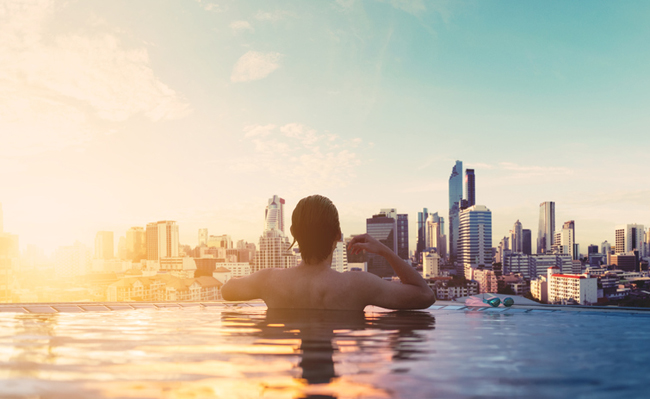
By Larry Mogelonsky, MBA, P. Eng. (www.hotelmogel.com)
Every North American resort owner knows that the time between Memorial Day and Labor Day is peak. The kids are out of school by mid-to-late June, making it family time for the beach, the great outdoors or a meticulously planned European vacation.
For a moment, though, let’s focus on urban properties. Bricks and mortar are depreciated all 12 months of the year. There are no summer breaks in your debt obligations even as the meetings and conference segment wanes. Yes, weekend occupancies may be buoyed by weddings or other citywide events, but you still can’t thrive off two nights of revenue per week.
You need a plan to cover your business through a quarter that will see limited, if any, midweek group activity. So, let’s examine the fundamentals of a solid leisure plan.
1. Know and be a part of your market. Product knowledge is essential. Look beyond your property’s walls to see what is happening locally. Typically, there is a schedule of activities covering everything from music, to sports and, of course, food. Get involved by sponsoring those events that are consistent with your brand strategy and target guest interests. Being the exclusive hotel partner is not necessary. You want breadth of coverage in this case and not necessarily depth.
2. Flag your summer activities. It’s great to be a sponsor. I’m sure that some local, and perhaps regional, advertising and promotions are included in your sponsorship package. That’s simply not enough these days. You need to broaden awareness on your website and through other relationship channels such as e-newsletters and in-house materials. Then add your own onsite features to elevate your property from just a hotel to an outright destination.
3. Everyone eats. What was considered exotic a decade ago is now thoroughly mainstream. Sushi, Thai, deep dish pizza, crazy burgers, gourmet tacos and even poke bowls and all have widespread awareness and appeal, meaning that you won’t be surprising anyone or winning accolades for their inclusion. Your guests want to try something new so you can just imitate what was trendy two years ago. As well, while it may sound sacrilegious to send a guest off property to eat, you must face the fact that unless you’re a destination resort in a remote location, guests will want to roam. Why not give them the tools to do so effectively and thereby stay relevant in the conversation?
4. Everyone also drinks. Separate from food, beverage is a critical component in delivering a truly local experience. Most every region has local wine, craft beer or small-batch distilleries. Your responsibility is to proudly demonstrate your community spirit by giving your guests an opportunity to sample these unique creations, adding to their local knowledge and creating a memorable touchpoint. The lure of supplemental revenue from the national brands is strong, and I’m not advocating walking away from those long-established relationships. Rather, I’m suggesting a balanced approach that augments consumer choice.
5. Bring back a little something. When traveling, I’m always looking for some souvenirs. Nothing distresses me more than seeing the same items in the hotel gift shop that I can find at a Walmart (with no disrespect to this fantastic retailer). Think of your on-property store as less of a profit center and more of a guest service reinforcement. If the goods are ho-hum and overpriced, you may make a buck or two more but, as a consequence, imbue a feeling that, once again, the guest is being taken for a ride.
6. Summer is not just for kids. My wife and I travel extensively during the summer period, and our kids are definitely not in tow. Re-examine your marketplace positioning and consider outbound materials that show adult enjoyment, not just a bunch of screaming kids by the pool. Examine your property’s ability to simultaneously manage families with kids and those without. Once you’ve figured it out, amp up your promotions as the empty nesters are a vastly underserved demographic at present.
7. Balance is key. You need to be true to your product. Know your limitations and plan accordingly. Resist temptations to overload your pool or restaurants. That additional bus tour stopover might have looked like great revenue when you booked it in February, but when they arrive in July and max out your facilities – thereby choking off high paying transients – well, you get the idea. While everyone strives for occupancy over 90% during these peak periods, your staff must be appropriately trained and services properly allocated to handle this surge, lest you tick off a few customers whose needs aren’t adequately met.
This article may not be reproduced without the expressed permission of the author.
Editor’s note: To discuss business challenges or speaking engagements please contact Larry directly.


